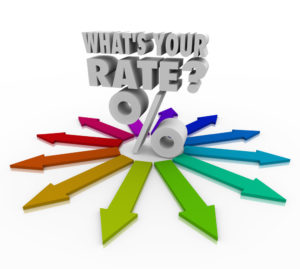 You’ve probably heard of margin loans, but do you know about investment lines of credit (ICLs)? Like margin loans, ICLs are backed by the assets in your portfolio but are used for non-securities investments — meaning you can’t use them to buy stocks and bonds. In my experience, ICLs also tend to be cheaper and offer higher loans relative to account value.
You’ve probably heard of margin loans, but do you know about investment lines of credit (ICLs)? Like margin loans, ICLs are backed by the assets in your portfolio but are used for non-securities investments — meaning you can’t use them to buy stocks and bonds. In my experience, ICLs also tend to be cheaper and offer higher loans relative to account value.
If you’ve been looking at mortgages, home equity lines of credit, or business financing, you should take a look — depending on your personal financial situation, ICLs can offer substantial loans at amazing rates.
What’s an ICL?
Let me give you an example. I recently had a client who was looking for a line of credit for his business, which he owns with a partner. With an ICL he was able to successfully leverage one of his personal accounts to facilitate the process — and the rate was substantially lower than other conventional loans he was considering.
In this case, the ICL was a good option for my client because he had a significant asset base and a willingness to utilize a portion of it for his firm.
In general, ICLs are very flexible. These loans are typically easy to set up and allow ongoing and adjustable access to credit. But there are restrictions: for example, you can only use non-retirement accounts as collateral for an ICL. The financing you can access could be significant: just to give you an idea, you might be able to borrow as much as 80% of your account value when borrowing against investment-grade bonds and up to 70% on a diversified equity portfolio.
So what do you need to do to get one? Generally speaking, you need to have a minimum amount of assets in your account in order to qualify, and for the most part the more money you have the better your interest rate will be.
In addition to your assets, your interest rate will be tied to LIBOR. Recently, I’ve been seeing rates for my clients in the neighborhood of 1.5% to 2.5%. Under certain circumstances, the rates you get could be even more attractive. So, if you’ve been looking at 4% mortgages or high margin loan rates and you have the assets to qualify for an ICL, it could be worth considering.
How do I get one?
Accessing ICLs requires that your assets are “in-house” with the firm you borrow from. Many companies are confident that you’ll avoid the inconvenience of moving your money and charge fees that are too high, so you might want to shop around.
Helping my clients access ICLs is something I do for free — this eliminates the middle man and, in turn, a layer of fees. I already benefit when my clients consolidate their investments with me as their advisor, so I consider facilitating these loans as part of my holistic service. That means happier clients for me, and typically better rates and less hassle for my clients. With most of my new clients coming from referrals, I think it’s an approach that works.
So, if you’re looking for a home equity line, mortgage, business or construction loan, or some other form of financing, I suggest you get a quote. ICLs can be used in so many different ways, and you might be able to get rates that blow your other financing options out of the water.
If you’re not sure how competitive your rates are, feel free to give me a call to see how your rates compare to ours. Rates don’t mean much until you have something to compare them to, so whether you reach out to me or another advisor, I urge you to do your homework.
What are the risks?
As with any loan, there are risks to ICLs.
The biggest risk is that the value of your portfolio could decline to a point where you’ll have to come up with additional capital towards your collateral. To manage this risk, it’s important to strategize which account (or accounts) you’ll be using and to match the loan terms to your risk profile.
It might make sense to speak to your accountant to make sure an ICL is a good idea given your personal tax considerations: it’s always a good idea to have tax planning in mind when making financial decisions, and you should inquire about the differences in tax treatment between ICLs and other loans.
Also, remember that ICLs are tied to LIBOR, which is a variable interest rate.
ICLs can be an amazing tool in the right circumstances, and they can also save you a lot of money as a borrower. If you have the asset base and are looking for a loan, take a look to find out whether an ICL is right for you.
*Want to find out more about the ICLs I offer? Take a look at my introductory blog post about the service.
.
Written by Bradford Pine with Anna B. Wroblewska
.
To learn about retirement savings, download my free eBook, “10 Tips You Need to Know About Your IRA Rollover.” This short book is packed with critical information that will help you make the right decisions about your retirement savings.
Written by Bradford Pine
Bradford Pine Wealth Group – New York City Financial Advisors
The views and opinions expressed in an article or column are the author’s own and not necessarily those of Cantella & Co., Inc. It was prepared for informational purposes only. It is not an official confirmation of terms. It is based on information generally available to the public from sources believed to be reliable but there is no guarantee that the facts cited in the foregoing material are accurate or complete.
Comments may not be representative of the experience of other investors. Investor comments and experiences are not indicative of future performance or results. Views and opinions expressed in the comments section are the author’s own and not those of Cantella & Co., Inc. No one posting a comment has been compensated for their opinions.


Comments are closed.